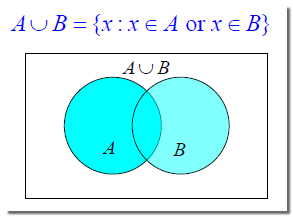關鍵字: Concat、Union、Intersect、Except
這些關鍵字適用於對二個集合做比對處理,例如,合併,交集,差集。
Concat
合併兩個序列,不會自動過濾相同項
(
from c in Customers
where c.ContactName.Contains("ann")
select new { c.CustomerID, c.ContactName }
)
.Concat
(
from c in Customers
where c.ContactName.Contains("von")
select new { c.CustomerID, c.ContactName }
)
Customers
.Where (c => c.ContactName.Contains ("ann"))
.Select ( c => new { c.CustomerID, c.ContactName } )
.Concat (
Customers
.Where (c => c.ContactName.Contains ("von"))
.Select ( c => new { c.CustomerID, c.ContactName } )
)
SELECT [t0].[CustomerID], [t0].[ContactName] FROM [Customers] AS [t0] WHERE [t0].[ContactName] LIKE '%ann%' UNION ALL SELECT [t0].[CustomerID], [t0].[ContactName] FROM [Customers] AS [t0] WHERE [t0].[ContactName] LIKE '%von%'

Union
產生兩個序列的聯集(∪)

(
from c in Customers
where c.ContactName.Contains("ann")
select new { c.CustomerID, c.ContactName }
)
.Union
(
from c in Customers
where c.ContactName.Contains("von")
select new { c.CustomerID, c.ContactName }
)
Customers
.Where (c => c.ContactName.Contains ("ann"))
.Select ( c => new { c.CustomerID, c.ContactName } )
.Union (
Customers
.Where (c => c.ContactName.Contains ("von"))
.Select ( c => new { c.CustomerID, c.ContactName } )
)
SELECT [t0].[CustomerID], [t0].[ContactName] FROM [Customers] AS [t0] WHERE [t0].[ContactName] LIKE '%ann%' UNION SELECT [t0].[CustomerID], [t0].[ContactName] FROM [Customers] AS [t0] WHERE [t0].[ContactName] LIKE '%von%'

Intersect
產生兩個序列的交集(∩)

(
from c in Customers
where c.ContactName.Contains("ann")
select new { c.CustomerID, c.ContactName }
)
.Intersect
(
from c in Customers
where c.ContactName.Contains("von")
select new { c.CustomerID, c.ContactName }
)
Customers
.Where (c => c.ContactName.Contains ("ann"))
.Select ( c => new { c.CustomerID, c.ContactName } )
.Intersect (
Customers
.Where (c => c.ContactName.Contains ("von"))
.Select ( c => new { c.CustomerID, c.ContactName } )
)
SELECT DISTINCT [t0].[CustomerID], [t0].[ContactName] FROM [Customers] AS [t0] WHERE ([t0].[ContactName] LIKE '%ann%') And EXISTS( SELECT NULL FROM [Customers] AS [t1] WHERE ([t0].[CustomerID] = [t1].[CustomerID]) And ([t1].[ContactName] LIKE '%von%') )

Except
產生兩個序列的差集

(
from c in Customers
where c.ContactName.Contains("ann")
select new { c.CustomerID, c.ContactName }
)
.Except
(
from c in Customers
where c.ContactName.Contains("von")
select new { c.CustomerID, c.ContactName }
)
Customers
.Where (c => c.ContactName.Contains ("ann"))
.Select ( c => new { c.CustomerID, c.ContactName } )
.Except (
Customers
.Where (c => c.ContactName.Contains ("von"))
.Select ( c => new { c.CustomerID, c.ContactName } )
)
SELECT DISTINCT [t0].[CustomerID], [t0].[ContactName] FROM [Customers] AS [t0] WHERE ([t0].[ContactName] LIKE '%ann%') And NOT EXISTS( SELECT NULL FROM [Customers] AS [t1] WHERE ([t0].[CustomerID] = [t1].[CustomerID]) And ([t1].[ContactName] LIKE '%von%') )

沒有留言:
張貼留言